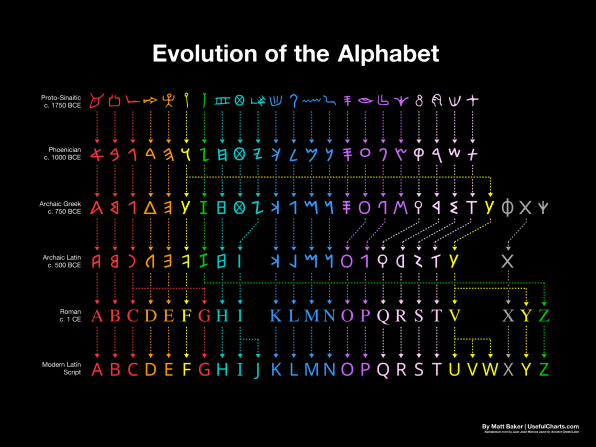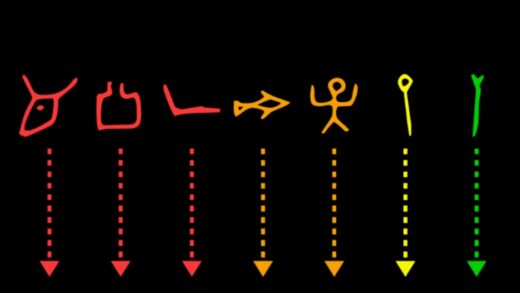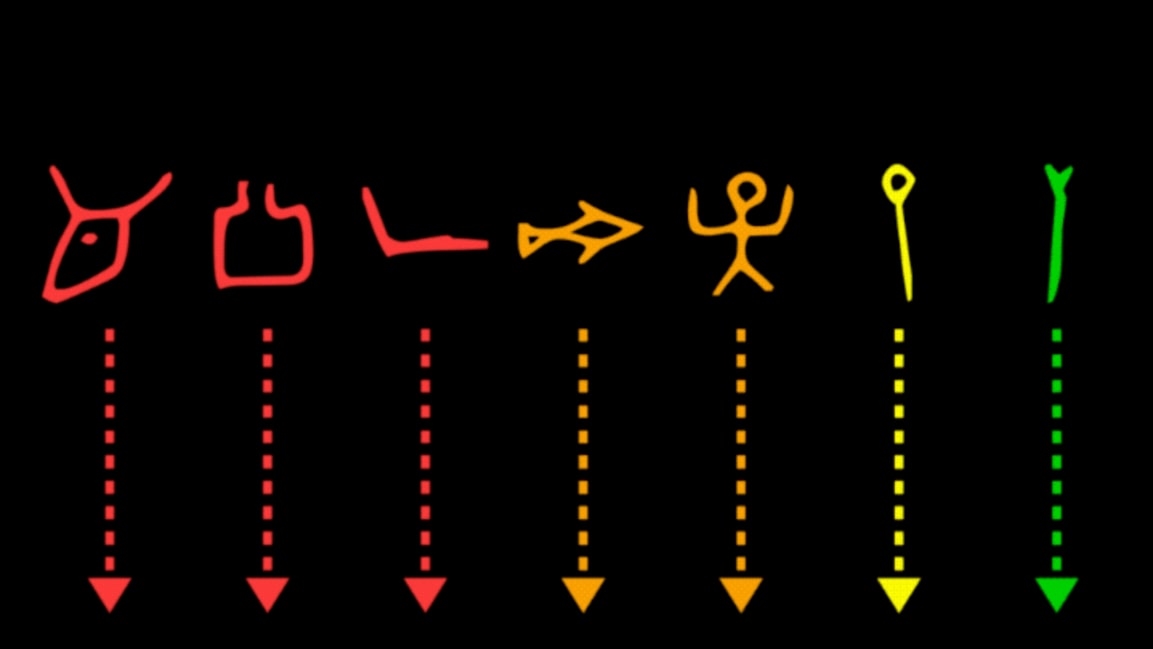See the amazing evolution of the alphabet, from 1750 BC to today
Phoenician. Greek. Latin. You might not think you know any of these languages. But in fact, you kind of do. Because the letters of the English language evolved directly out of all of these written languages from our history.
It’s a fact beautifully illustrated by the $25 poster Evolution of the Alphabet. Drawn by Matt Baker and spotted by Colossal, it charts out the visual timeline of all 26 glyphs in the alphabet.

A word of warning: Learning the rich visual history of our language will likely break your heart because the letters went from quirky symbols to the more anonymous looking letters we have now. Starting from the top of the poster, each letterform cascades down through history in a game of Plinko.
Tracing roots back to Proto-Sinaitic (1750 BCE)–which was the first alphabet to be built from consonants, pulling a lot of inspiration from Egyptian hieroglyphics–the D began as a drawn fish. The E was a human with arms in the air. The A was an ox head.
The forms start to resemble what we’d consider letters in Archaic Greek circa 750 BCE. And by 1BCE–as Romans standardized papyrus scrolls into uniform sheets, wrapping them in binding to create what we could come to call the book–they created what is more or less our modern Latin Script of today. That means 2,000 years ago, our alphabet was largely done. Of course, it would still take two more whole millennia for written language to reach its true potential in the greatest collection of literature ever assembled: The Twilight Saga.
(67)



